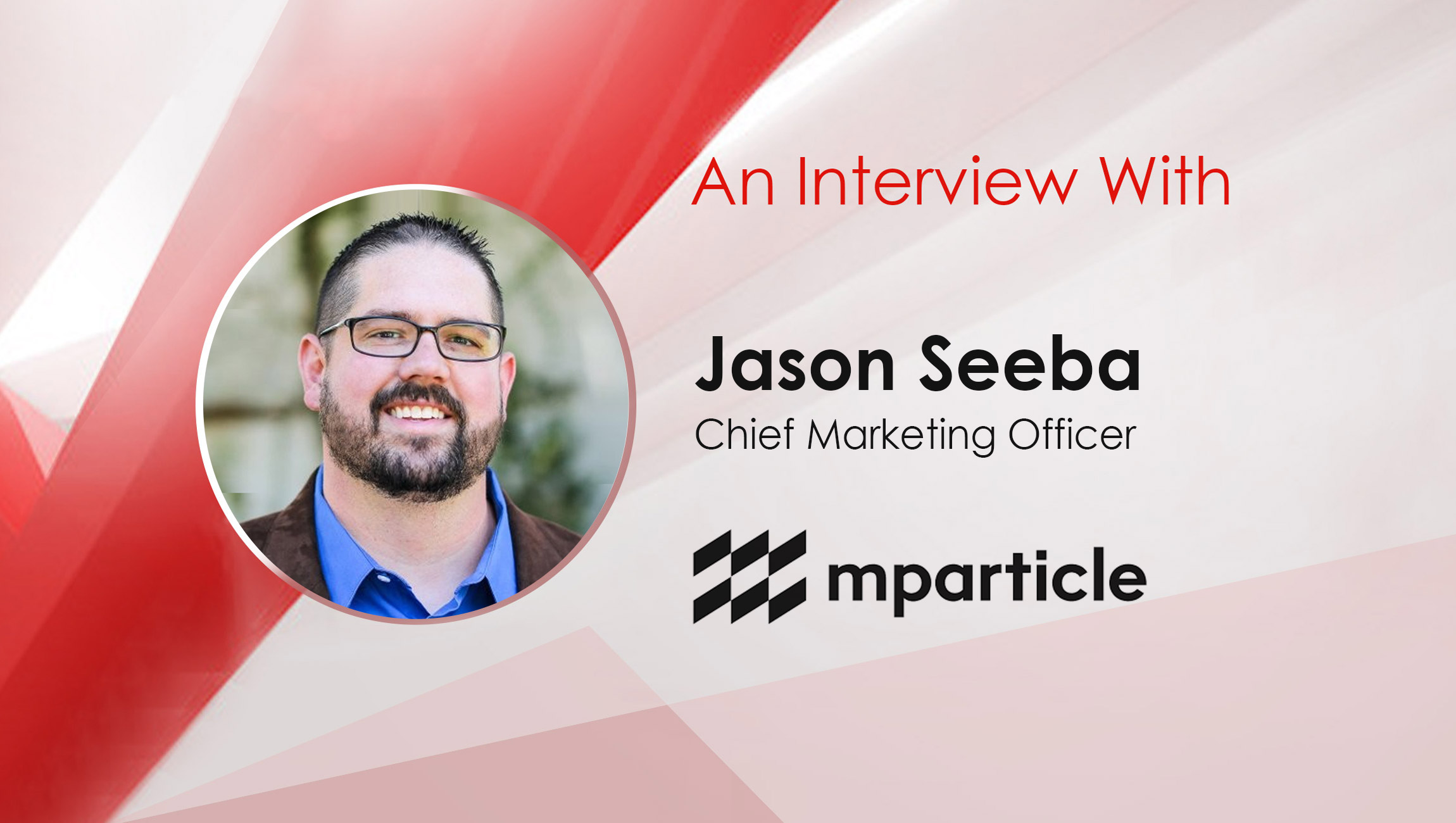Jason Seeba, Chief Marketing Officer at mParticle talks about the importance of building customer-centric marketing cycles in this quick catch-up:
_________
Welcome to this MarTech Series chat, Jason, tell us more about your new role as CMO at mParticle…we’d also love to quickly hear about your marketing journey through the years: the biggest highlights and takeaways you’ve come away with…
I grew up in Silicon Valley and way back in the day, I had the opportunity to start the first high school Internet radio station. We had 10 million plus listeners to our station because we hustled to be one of a couple alternative music presets in the RealPlayer G2. Went down to school in LA and started another radio station from scratch. That summer, at 19 years old, I joined a startup doing peer-to-peer audio streaming before Napster was a thing. We signed up a bunch of radio stations and networks competing directly with Broadcast.com – Mark Cuban’s company.
I love getting in on big ideas early. Over the years, I’ve run Marketing at many early stage, high growth SaaS companies, several of which became the fast growing and most innovative in the Valley. Eightfold and BloomReach have both hit unicorn status and loved helping build the Marketing foundation for both.
For me, it’s always been about how you stitch together people, processes, and technology in order to drive revenue. At first it’s about understanding your initial customers at a deep level. Then it’s understanding them and their needs at scale. A big piece of being able to build this revenue engine is ultimately using data to create the best experiences at scale, which is our focus at mParticle.
For marketing teams in B2B today, what are some of the functions/skills that everyone across the hierarchy needs to sport more of (how can teams strengthen these skills and internal processes while at it?)
Over the course of the last few years in tech, we’ve seen growth at any cost. Now, we’re getting back to growth at reasonable cost, which means people must be both thoughtful and data-driven in their demand generation strategy, and willing to place bets where other people aren’t so they can get the return needed. There are a few ways teams can be successful at this:
- Have the best customer data and be able to operationalize it with a best-in-breed marketing stack. This should be table stakes in the industry at this point but is not always – make sure it is in your company.
- By truly being customer centric. Looking not only at their interests, but also how they want to buy. For example, many B2B marketers are moving from a more Enterprise selling motion to one driven by the product. This isn’t just a tactical Marketing change, but a transformation of how the entire company goes to market. It also means moving quickly to innovate. With so many copycat tactics in competitive markets, winning comes down to how you innovate and execute.
- By using data to improve where possible – and take risks where the data won’t help. There’s been a tendency, especially in B2B marketing to bias toward trackable channels and their return. Everyone on the Marketing team needs to understand the business and how to use data, but there are areas where the data can be incomplete or provide a less than full picture of impact. It’s the job of the Marketing team to know the difference between the two, clarify it for the company – and to take the risks to drive impact when the data might not be there to support it.
Marketing Technology News: mParticle Acquires AI startup Vidora To Help Teams Augment Customer Profiles and Improve Their Marketing Stacks
For a new incoming CMO of an existing marketing team: what do you feel are some of the biggest teething challenges and what practices should CMO’s in a new role follow initially?
The role of CMO can be very broad, so find areas you can impact in the short term to get quick wins.
Helping people on the team and across the company connect their work with not only the goals, but the mission of the company. If you don’t have an inspiring mission, it’s time to think about the impact your company can make. And re-tell that story. Getting people focused on simple, clear goals – including the metrics that you need to move. Then get everyone on board to move them quickly. People can rarely optimize to a number of different (and many times, changing) goals. It’s your job to foster that alignment and push that urgency. Also, say no to the things that aren’t on the critical path here.
Understanding the buyer and impact your product makes, especially if you’re coming from a different vertical is key. I’ve seen CMOs come in and get caught without deeply understanding the buyer and the market. Getting out there to talk to people consistently and going deep into the tech should be priority number one. It’s also a bonus if you are the persona or at least you can relate deeply to who you’re marketing and selling too.
We’d love to hear more about your marketing processes/strategies that have often featured as part of your marketing activities over the years and also, a little about the martech that helps drive output for you….
Over the course of my career, I’ve focused on making Marketing teams more revenue driven. Many times, that means bringing sales development teams into marketing, so you can deliver pipeline versus just leads to the sales team. It brings the go-to-market teams together with clear revenue goals. It also means you’re focused on pipeline generation, progression, and coverage versus upstream metrics that don’t matter nearly as much to the business.
Then it’s about the story and getting alignment across the company on how to tell it. Words matter here and especially on the Enterprise side, getting customers to evangelize in their own organization means you need to be extremely tight and concise on both messaging and the customer stories that you re-tell. With complex technologies, with a number of use cases, that might mean anchoring on only one or two of them to create simplicity and velocity.
Another part of the puzzle is bringing in new tech to make an impact. I’ve used technologies like 6sense or Leadspace to get AI-driven insights on who to target and how to operationalize it at scale as well. That targeting has made our go-to-market motions much more efficient, across a number of companies. On the sales side, I’ve used Clari across four companies, which has provided incredible insight into individual deals and the entire go-to-market. It’s core to driving and progressing the pipeline and I wouldn’t want to join a company that wasn’t open to it or have something similar in place.
Marketing Technology News: MarTech Interview With Ali Habibzadeh, Chief Technology Officer, Deepcrawl
Five thoughts on the future of B2B marketing and martech?
- Stitching together the best-in-breed marketing stack will continue to be an advantage – while larger platforms continue to consolidate, you still need to bring in the best tools, AI, and intelligence into your stack. That is how you win.
- Less and less data will be available for customer acquisition – and costs are going up. Owning your customer data and driving the best customer experience will be more and more important.
- Over the last decade, there were a bunch of startups that slapped AI/ML into their marketing technologies where there wasn’t a clear use case. Now with the maturing of AI, there’s an opportunity to add intelligence to drive better customer experiences across channels.
- There are so many shiny objects when it comes to MarTech. Building the foundation from the ground up isn’t always sexy, but it drives impact. That said, always take a portion of your Marketing Technology spend (10-20%) to experiment on the crazy ideas. There are so many new technologies that can drive impact.
- The limitation on adopting new MarTech tools isn’t always budget, it’s the ability to absorb the change and ultimately have someone to own and drive the impact. Having a CDP like mParticle can help you much more easily adopt and test new technologies too!
Some last thoughts, takeaways, before we wrap up!
As the role of CMO gets both more complex and fragmented at the same time, there is an increasing need to be a GM of the business and to find the challenges and ways to improve across the entire company. Don’t be afraid to go where the issues are and solve them!
mParticle is a customer data platform built for every screen. Sophisticated marketers at companies including Starwood, NBC Universal, Spotify and Airbnb use mParticle to integrate and orchestrate their entire growth stack, enabling them to win in key moments of the customer journey.
Jason Seeba is Chief Marketing Officer of mParticle. Before joining mParticle, Jason was Senior Vice President of Marketing for eightfold.ai. He also has held senior marketing management roles for Dynamic Signal and Bloomreach. Jason holds a bachelor’s degree and an MBA from Azusa Pacific University. mParticle makes it easy to holistically manage customer data along the entire product and customer lifecycle. Teams across companies like NBCUniversal, JetBlue, Venmo, and Airbnb use mParticle to deliver great customer experiences and accelerate growth by solving the foundational challenges that impede success at scale. Founded in 2013, mParticle is headquartered in New York City with employees around the globe.
Missed The Latest Episode of The SalesStar Podcast? Have a quick listen here!
Episode 130: Digital Marketing and Ad Best Practices with John Piccone, Regional President, U.S, Adform
Episode 129: Regional Sales Development Best Practices with Abdul Javed, VP of Sales for APAC at Clari
Episode 128: Marketing Tips and Best Practices for the Rest of 2022 with Daniel Rodriguez, CMO at Simplr












